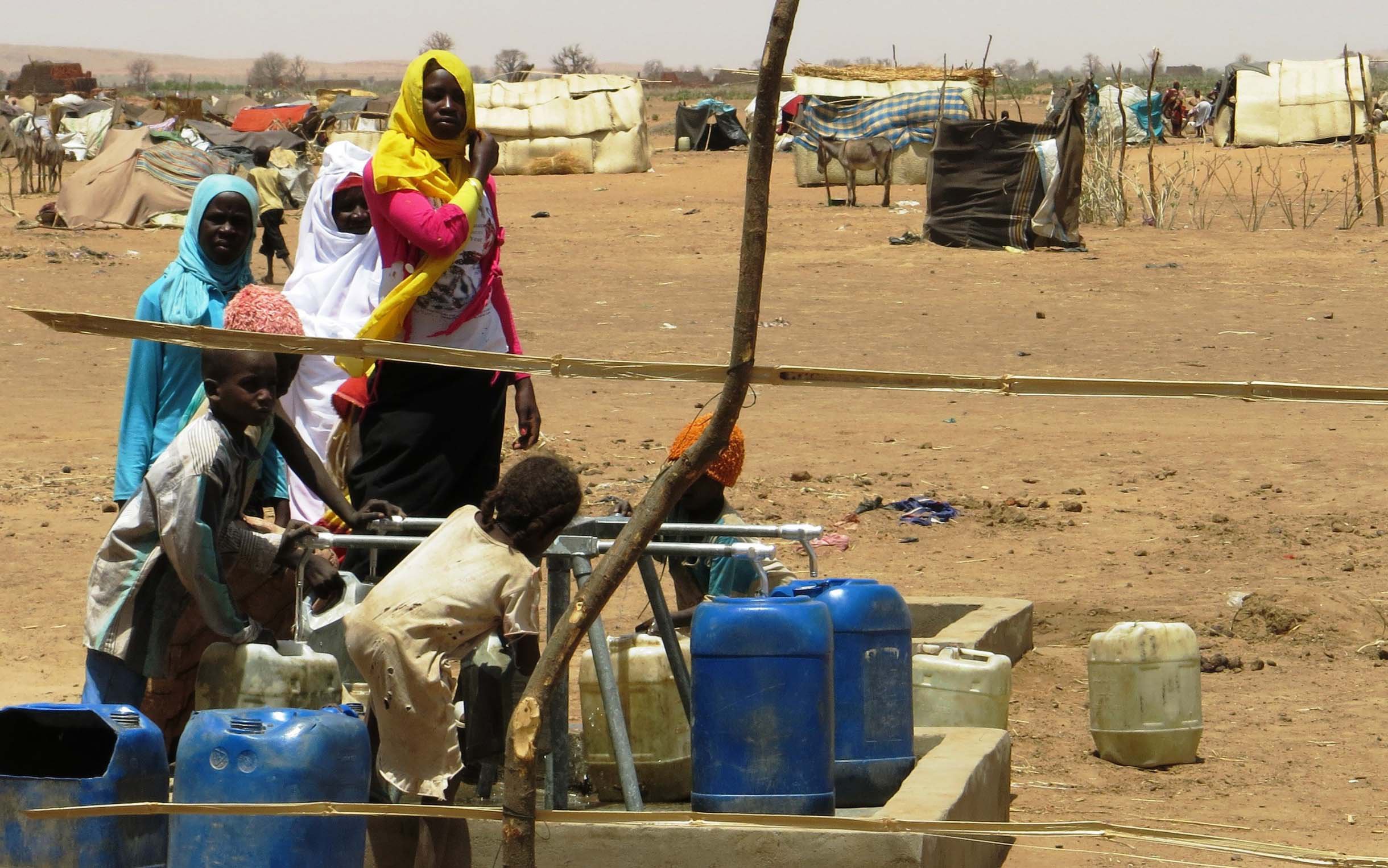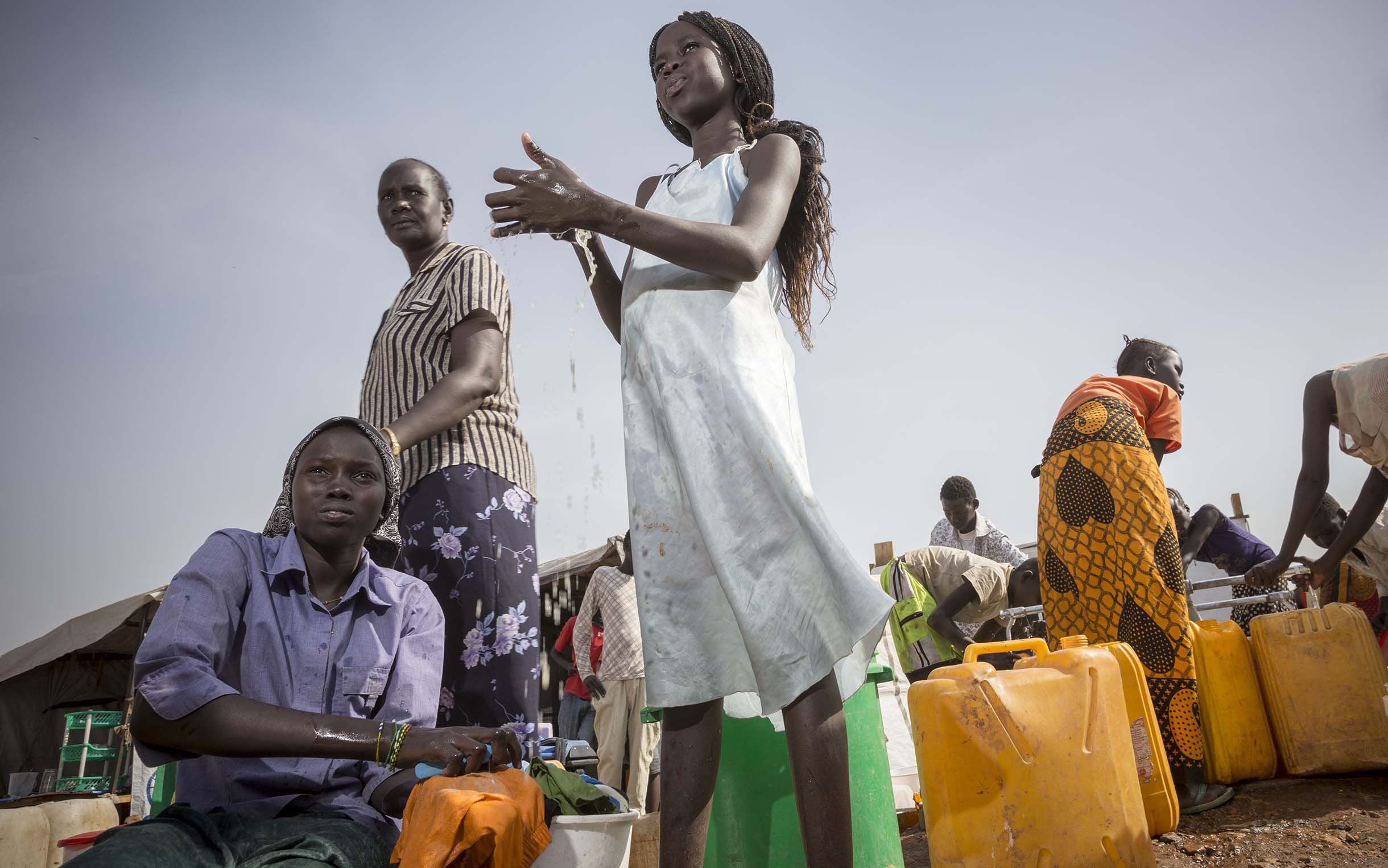Here's what you need to know about what’s going on in Sudan and South Sudan, and the difference between the two countries.
Until 2011, they were one country. That year, following decades of civil war, the southern section seceded, becoming one of the world’s newest nations: South Sudan. Here’s a short primer on this region and what Oxfam is doing to help people affected by conflict in Sudan and South Sudan.
Conflict in Sudan
Sudan is a country at war between the government and paramilitary fighters contending for political control. The current conflict started in mid- 2023, and has affected large numbers of civilians, displacing more than 12 million people and also affecting nearly 4 million already displaced by previous conflict in the western Darfur region of the country.
The current conflict is damaging infrastructure including health care facilities. As the conflict is cutting people off from water, food, and affecting farmers and livestock herders, Sudan is now affected by famine in five regions identified by the Integrated Food Security Phase Classification (IPC).
Sudan’s western region of Darfur has suffered from decades of political marginalization and economic neglect by successive national governments, leaving an estimated 7.5 million people—almost a quarter of the country’s total population– impoverished
When armed groups in Darfur launched a rebellion in 2003, the government responded with force, and the fighting quickly escalated. Armed militias, known as Janjaweed, began systematically attacking and destroying villages considered sympathetic to the rebels. In the six years that followed, Darfuris saw nearly 3,000 of their villages destroyed or damaged. In the first 10 years of the conflict, the UN estimated that 300,000 people lost their lives.
Despite the establishment of a transitional government in 2019, the conflict and upheaval didn’t end. Continuing conflict in Darfur that is displacing farmers from their lands and destroying their crops makes it one of the areas currently experiencing famine. Over the years of conflict in Sudan, the government and rebel forces have also clashed in the states of Blue Nile and South Kordofan.
The UN estimates that 30 million people in Sudan need humanitarian assistance. Since the beginning of civil violence in 2023, roughly 3 million of the 12 million people displaced in the conflict have sought refuge in nearby countries.
Oxfam's work in Sudan

Oxfam first began work in Sudan in 1983, providing humanitarian assistance to people affected by violence in southern areas of the country. When violence in Darfur began in 2003, we worked with partners and displaced communities on programs to deliver clean water and sanitation facilities, sharing information about health and hygiene, helping farmers in vulnerable rural areas improve their harvests, supporting women to start small businesses and to improve their families’ nutrition, helping communities protect themselves from climate-related crises, like drought, and helping leaders build peace in their communities.
Our humanitarian work has also focused on people affected by conflict in the border state of South Kordofan, and we have provided assistance to refugees fleeing conflict in South Sudan.
Oxfam continued work in Darfur and other areas in Sudan until 2022. In recent months, Oxfam has provided humanitarian assistance to Sudanese refugees seeking humanitarian assistance in South Sudan, where we are providing clean water, latrines, hygiene items, as well as cash and other assistance designed to reduce the vulnerability of women to sexual violence.
In eastern Chad, where more than 700,000 Sudanese people have crossed the border to escape the violence and famine, Oxfam is planning to assist more than 50,000 people in three refugee camps and people in four villages near the border that are hosting refugees. By early January 2025, Oxfam has provided cash to 13,000 people, constructed 2,400 latrines, and is providing clean water and hygiene items.
Conflict in South Sudan
When South Sudan gained its independence in 2011, citizens were optimistic about the future of their new country. But civil war broke out in 2013, accompanied by violence and extreme hunger, diminishing the high hopes its citizens initially had. After several years of conflict, marked by famine (in 2017) and disease outbreaks and massive movements of displaced people and refugees, the two sides of the conflict negotiated a ceasefire in 2018 and an agreement for a transitional government starting in 2020.
Nearly the size of Texas, South Sudan has abundant oil reserves. Still, most people make their living as subsistence farmers and herders. The conflict following independence caused nearly four million people to flee their homes, creating the largest refugee crisis in Africa at that time. The conflict coincided with an economic crisis, with inflation skyrocketing 800 percent a year as families struggled to find food.
South Sudan is also vulnerable to the effects of climate change. After the end of hostilities in 2018, South Sudan was hit by several successive years of heavy rains and floods that delayed the return of refugees from Uganda and Ethiopia, two countries hosting the largest numbers of refugees on the continent of Africa.
During the latest surge in fighting in Sudan starting in 2023, nearly a million Sudanese refugees and South Sudanese citizens returning to their country have crossed the border into South Sudan.
Oxfam's work in South Sudan

Oxfam is working in South Sudan to meet the urgent needs of the most vulnerable people and to help them build a stronger future. We have seven humanitarian bases across the country as well as a deployable team that can respond to other locations as needed.
The provision of clean water and sanitation services—including hygiene promotion—is one of the main activities on which we focus. We drill and repair wells, test and treat water, and train local groups to maintain their own water supplies. We dig latrines in camps and settlements, build hand-washing stations, and distribute hygiene kits. And through home visits and public discussions, we promote knowledge of waterborne diseases and effective ways of preventing them.
We are working with partners to help farmers buy livestock or produce their own food, supporting them in their efforts to establish small businesses, and providing them with training and tools.
In areas hosting refugees from Sudan, Oxfam is providing emergency drinking water, latrines, and bathing facilities. In addition, Oxfam is supplying hygiene and dignity kits – with essential items like soap, detergent for washing clothes, and toothbrushes and toothpaste. The dignity kits provided to women also have underwear, menstrual items, and a solar-powered flashlight.
